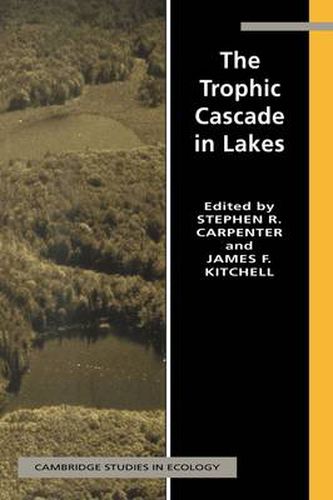Readings Newsletter
Become a Readings Member to make your shopping experience even easier.
Sign in or sign up for free!
You’re not far away from qualifying for FREE standard shipping within Australia
You’ve qualified for FREE standard shipping within Australia
The cart is loading…






Fluctuations in fish populations in lakes can cascade through food webs to alter nutrient cycling, algal biomass and primary production. Trophic cascades may interact with nutrients and physical factors to explain most of the variance in lake ecosystem process rates. In this book, a multidisciplinary research team tests this idea by manipulating whole lakes experimentally, and coordinating this with palaeolimnological studies, simulation modelling, and small-scale enclosure experiments. Consequences of predator-prey interactions, behavioural responses of fishes, diel vertical migration of zooplankton, plankton community change, primary production, nutrient cycling and microbial processes are described. Palaeolimnological techniques enable the reconstruction of trophic interactions from past decades. Prospects for analysing the interaction of food web structure and nutrient input in lakes are explored.
$9.00 standard shipping within Australia
FREE standard shipping within Australia for orders over $100.00
Express & International shipping calculated at checkout
Fluctuations in fish populations in lakes can cascade through food webs to alter nutrient cycling, algal biomass and primary production. Trophic cascades may interact with nutrients and physical factors to explain most of the variance in lake ecosystem process rates. In this book, a multidisciplinary research team tests this idea by manipulating whole lakes experimentally, and coordinating this with palaeolimnological studies, simulation modelling, and small-scale enclosure experiments. Consequences of predator-prey interactions, behavioural responses of fishes, diel vertical migration of zooplankton, plankton community change, primary production, nutrient cycling and microbial processes are described. Palaeolimnological techniques enable the reconstruction of trophic interactions from past decades. Prospects for analysing the interaction of food web structure and nutrient input in lakes are explored.